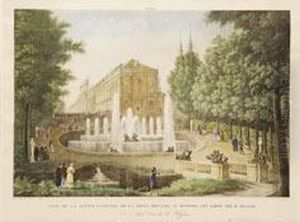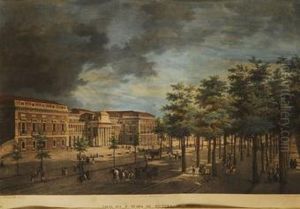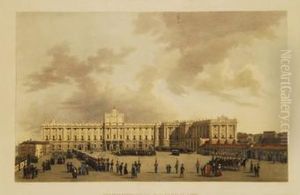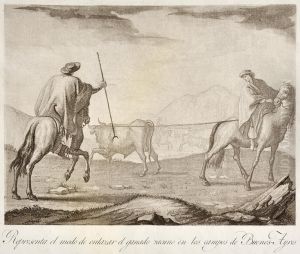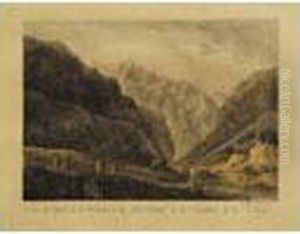Fernando Brambilla Paintings
Fernando Brambilla was an Italian artist, born in Milan in 1763. He was known primarily for his work as a vedutista, a painter specialized in vedute, which are highly detailed, usually large-scale paintings of cityscapes or other vistas. Brambilla is particularly remembered for his contributions to the genre of capricci, architectural fantasies that combine elements from different buildings or ruins in imaginative ways, often in an idyllic setting.
Brambilla's career was deeply intertwined with the political and cultural shifts of his time. He lived through the tumultuous years of the Napoleonic Wars and the subsequent changes in European borders and governance. His work reflects the neoclassical tastes of the era, a style that emphasized the grandeur and symmetry of ancient Greek and Roman art, which was in vogue at the turn of the 19th century.
Although not as widely known today as some of his contemporaries, Brambilla was esteemed in his day for the quality of his work and his ability to capture the essence of his subjects. He worked in various cities across Italy and Europe, and his pieces were often commissioned by the wealthy and powerful, including members of the Napoleonic court. Fernando Brambilla's work can be seen as a historical document, offering insight into the urban and rural landscapes of his era, and reflecting the aesthetics and interests of the Enlightenment and its aftermath.
The artist died in 1834, leaving behind a legacy of detailed and atmospheric works that continue to be of interest to those studying the neoclassical period and the history of European art. His contributions to the vedute genre have ensured him a modest but enduring place in the annals of art history.
